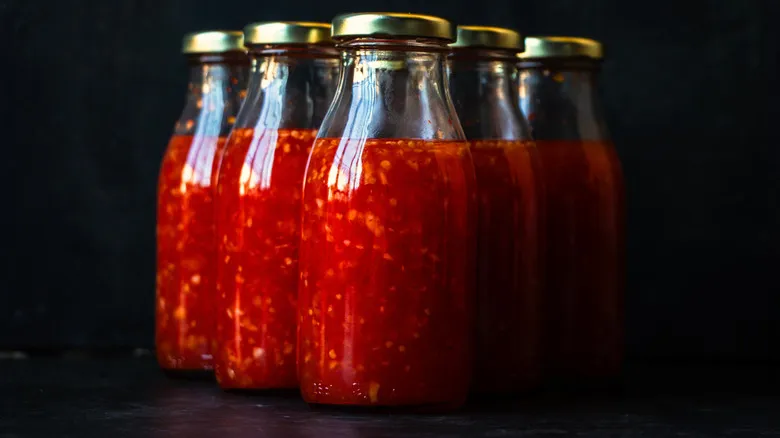What is a sauce?
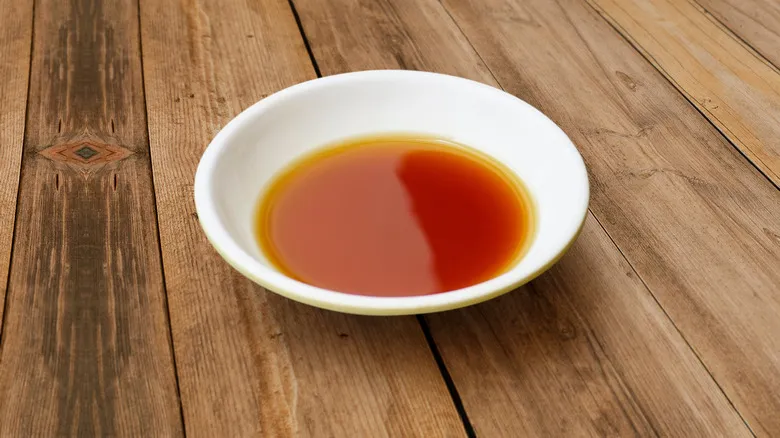
Sauce encompasses a wide range of culinary creations, referring to any liquid blend that enhances a dish. Its function in cooking is versatile; it can serve as a finishing touch or a burst of aromatic flavor, such as hot sauce. Conversely, it can also be a defining element of a dish—some might argue that curry qualifies as a type of sauce, though this is a matter of debate. More frequently, sauces occupy a middle ground, adding moisture and flavor without completely defining the dish.
Chefs have various approaches to creating sauces, with a common method being the thickening of a liquid mixture to intensify its flavors and texture. This can be achieved through the use of flour, starch, breadcrumbs, or simply by reducing the liquid. This technique is the foundation for the five mother sauces—béchamel, velouté, Espagnole, hollandaise, and tomato. However, there are also raw, unthickened sauces, such as salsas and pesto.
Sauces can be combined to create even more elaborate flavors. Complex fermented sauces like fish sauce, soy sauce, Worcestershire sauce, and oyster sauce already offer a rich array of tastes. In Asian cuisine, these sauces are often blended further, leading to new flavor combinations. Such accessible yet intricate flavor profiles highlight the unique ability of sauces to impart taste in ways that few other culinary elements can.
What is dressing?
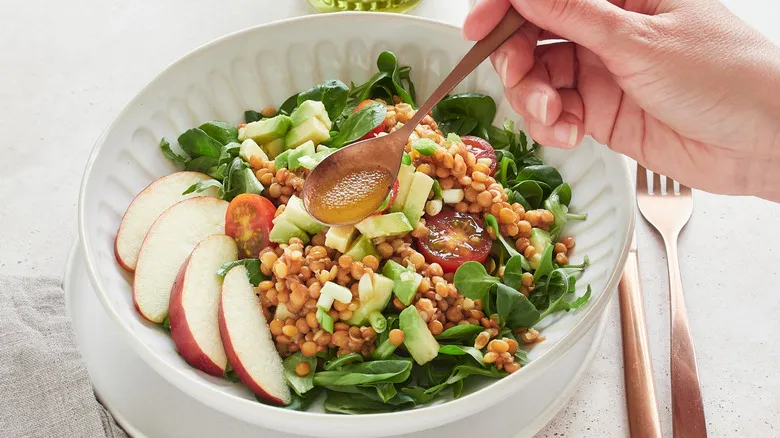
The term "dressing" encompasses a variety of meanings, even by dictionary standards. It can refer to fertilizer, a liquid for wound treatment, a dish akin to stuffing, and — most pertinent here — a type of sauce. Consequently, pinning down a precise culinary definition can be challenging. Some argue that dressing is merely a thinner sauce, but more commonly, it signifies a flavorful blend of oil, vinegar, and aromatics that unifies various dishes. The combinations of these ingredients are extensive, and chefs continually innovate new variations of dressing.
While dressing is most famously associated with salads, there are some unexpected examples that don't conform to this norm. Mayonnaise, which combines eggs with oil and vinegar, qualifies as a dressing, though it is so prevalent that it often occupies its own category. Additionally, some dressings deviate from the traditional oil-and-vinegar foundation. Take ranch dressing, for instance, which incorporates mayo, buttermilk, cream, and seasonings for added flavor. Then there's blue cheese dressing, which features a similar mix of mayo, sour cream, herbs, and the distinctive blue cheese.
It's also important to mention that "dressing" can denote a dish resembling stuffing, made from bread, aromatics, and herbs. This version, moistened with broth and enriched with butter, is typically prepared separately and is not stuffed inside a roasted bird. While this dish doesn't fall under the sauce category, it remains a cherished highlight of many Thanksgiving feasts.
Dressings emulsify ingredients for salad
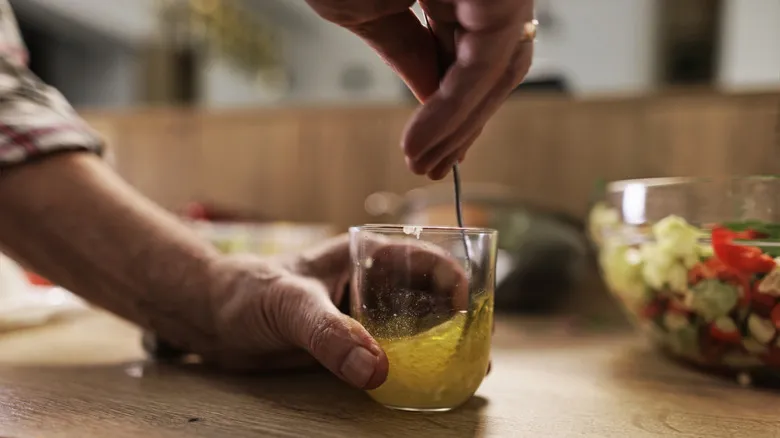
Dressings utilize a combination of oil and vinegar to produce a range of aromatic flavors. Interestingly, this duo is not stable, as the vinegar and oil naturally repel each other. Therefore, an emulsifier is needed to blend these components. Common emulsifiers include mustard, honey, tomato paste, and egg yolks, with at least one of these ingredients being crucial for achieving and maintaining a stable consistency.
While this delicate balance may seem restrictive, it is what characterizes dressings as a specific type of sauce. However, salad dressings can include a wide array of ingredients, from citrus and herbs to various types of alcohol, as well as garlic, seafood, and more. Oils help to suspend aromatic elements, while the acidity of vinegar balances them out, resulting in a reliably pleasing combination. Dressings can elevate a dish and can even impart bold vegetable flavors or fruity notes. (If you enjoy creamy dressings, you might want to explore the distinctions between salad cream, ranch, and mayonnaise.) Like other sauces, dressings come in numerous flavors and colors, but they are primarily intended for salads.
You’ve probably encountered some particularly popular varieties. For instance, Caesar dressing features egg yolks, garlic, and anchovies, while Thousand Island dressing is a unique blend of tomato products, pickles, citrus juice, paprika, powdered peppers, mustard, and cream. For a simpler option, a classic vinaigrette can consist of as few as four ingredients—just ask Ina Garten. This contrast between minimalist and more complex ingredient lists showcases the versatility of dressings.
Sauces come in more styles than dressing

Sauces can be classified into various categories, with one of the closest relatives to dressings being other emulsions. For instance, hollandaise sauce, which combines butter and egg yolk, employs a similar chemical process, which is why it can sometimes separate. Another related category includes raw sauces like chimichurri, which are herbaceous and typically paired with meats rather than salads.
Another prevalent category of sauces features fruit, with all-purpose tomato sauce being a prime example. This sauce, centered around tomatoes, can be enhanced with herbs or made more savory by adding beer or wine, and it can even be served raw. Interestingly, applesauce also fits into this broad category, as it consists of fresh, pureed fruit.
On a different note, there is a wide range of dairy-based sauces, particularly those centered around butter. A classic example is beurre blanc, created by emulsifying slowly cooked butter with shallots. If you cook it a bit longer over heat, it transforms into beurre noir, which is complemented by the tanginess of citrus or capers. The dairy category also includes cheese-based sauces, such as béchamel or white sauce, as well as queso.
These broad classifications highlight the diverse possibilities of sauces, extending far beyond the confines of dressings. From barbecue sauce to horseradish and mustard, liquid sauces are an excellent way to infuse dishes with vibrant flavors.
Recommended
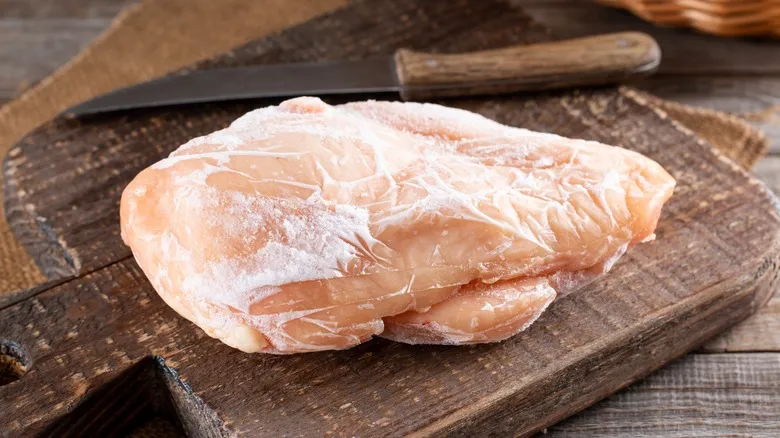
Is It Safe To Cook Frozen Chicken Without Thawing It?

Are Humans Hard-Wired To Love Carbs? Scientists Think So
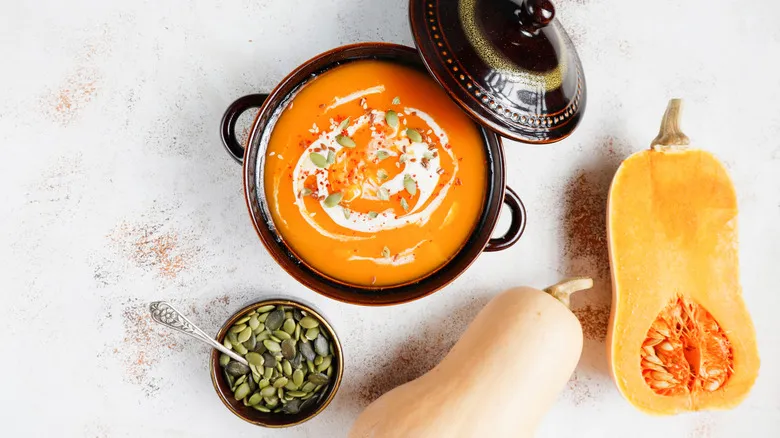
The Fruits You Should Never Store Near Butternut Squash
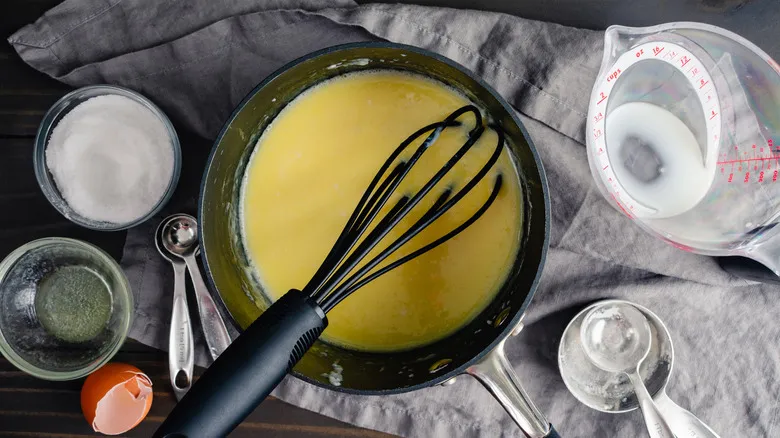
Roux Vs Slurry: The Difference, Explained
Next up

